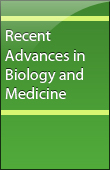


The use of artemisinin derivatives has become the mainstay in the treatment of both severe and uncomplicated falciparum malaria. The available report suggests that the derivatives are safe and well tolerated in most patients, with only a few cases of severe adverse drug reactions to some of these derivatives. In the present report, a 30-year-old breastfeeding mother and a resident of Ekpoma, Edo State, Nigeria, who on presenta- tion was diagnosed with severe malaria, developed pruritus 4–6 h after receiving the first dose (150 mg) of intramuscular αβ-arteether. This condition became more intense with widespread pruritic rash and extensive erythematous eruptions and excoriating skin lesions following the second dose of the drug. However, the administration of the drug was discontinued on the third day with the eruptive lesions abating following the administration of antihistamines and steroids (loratadine and prednisolone) for 5 days. In conclusion, the clinical manifestation shows the case of an αβ-arteether-induced dermatitis secondary to an immediate hypersensitivity reaction, which is a rare occurrence with the drug. The adverse drug reaction to this agent also emphasizes the need for postmarketing surveillance and monitoring of most artemisinins, particularly in sub-Saharan Africa where they are being increasingly used for the treatment of malaria.